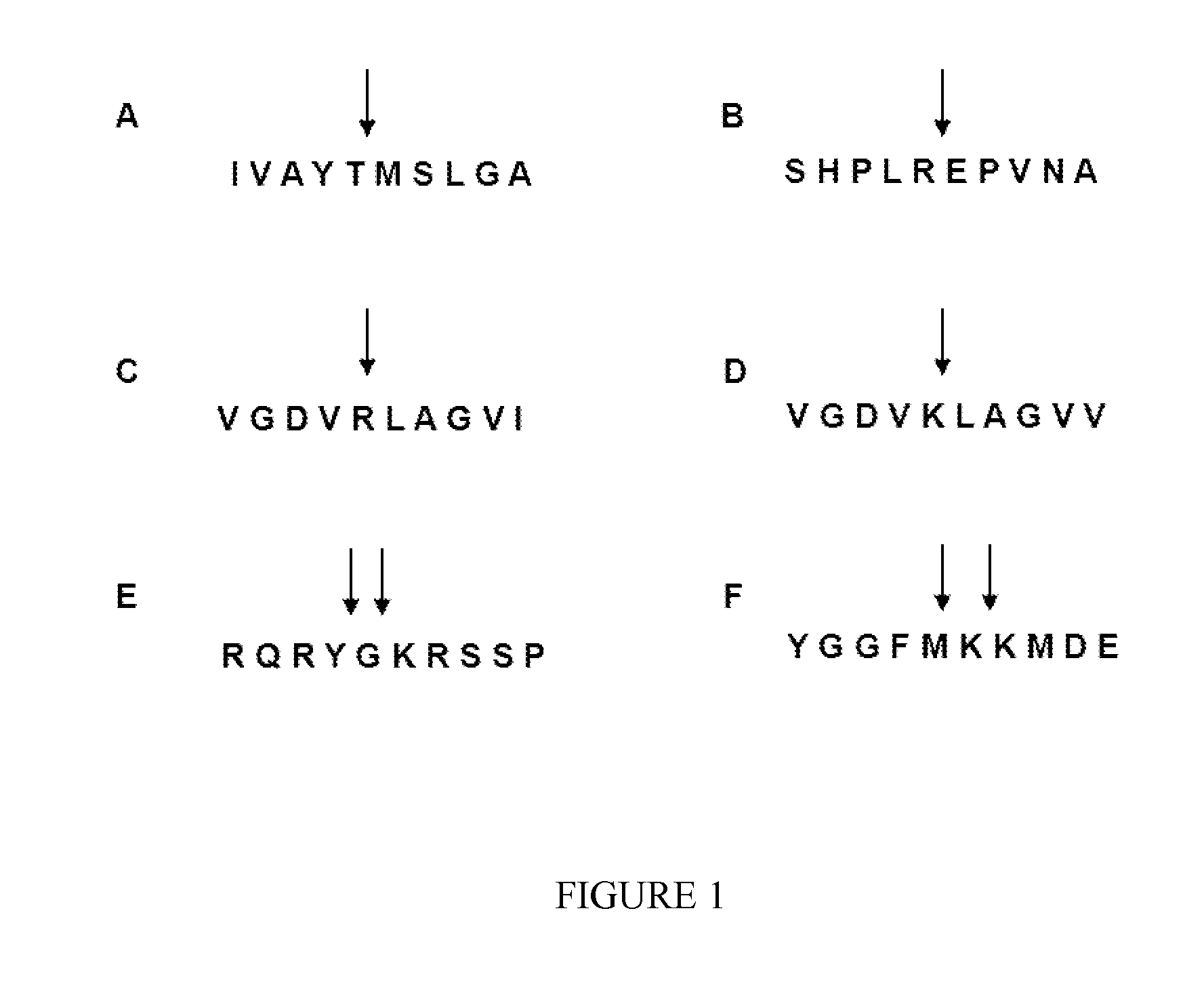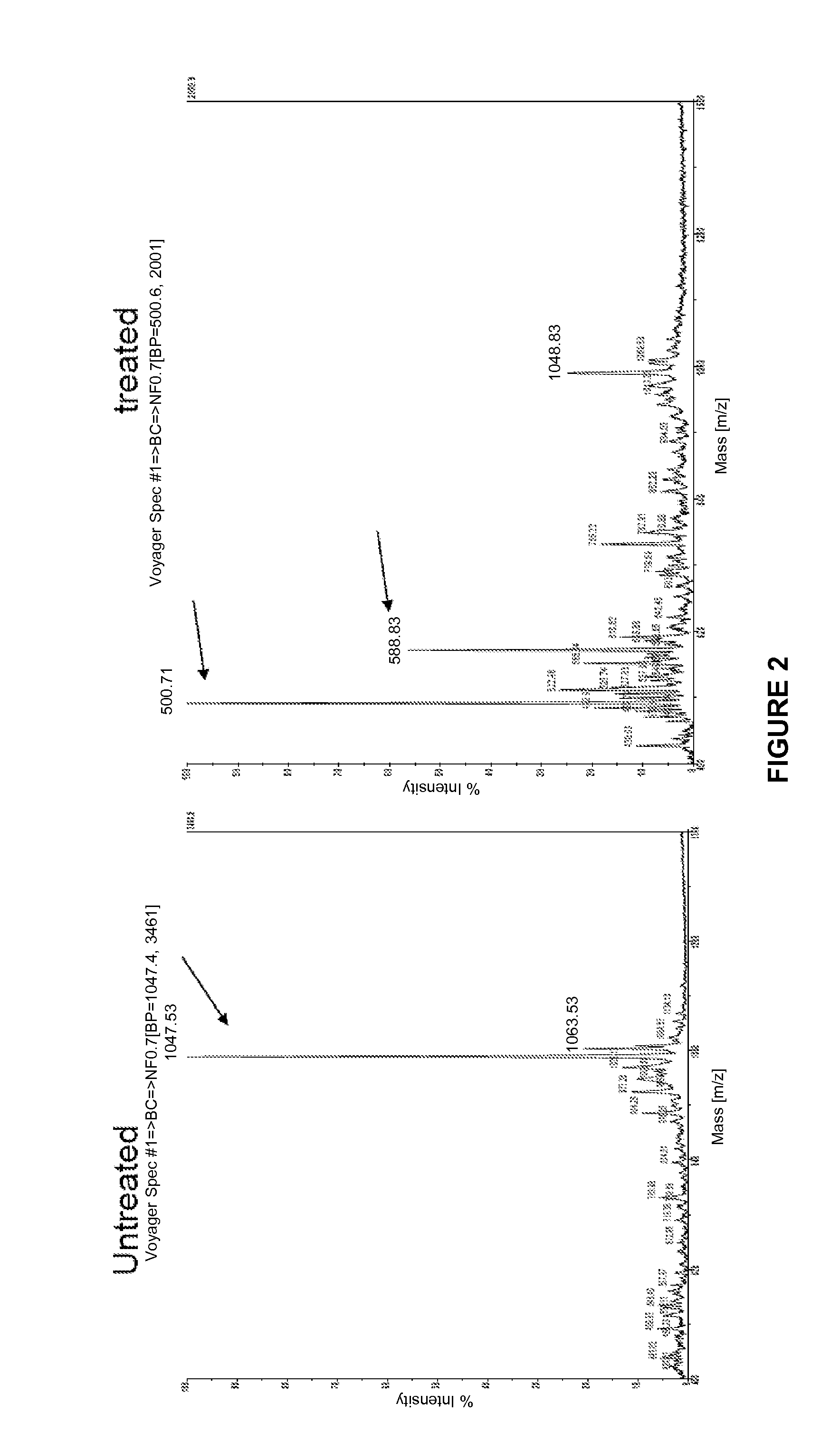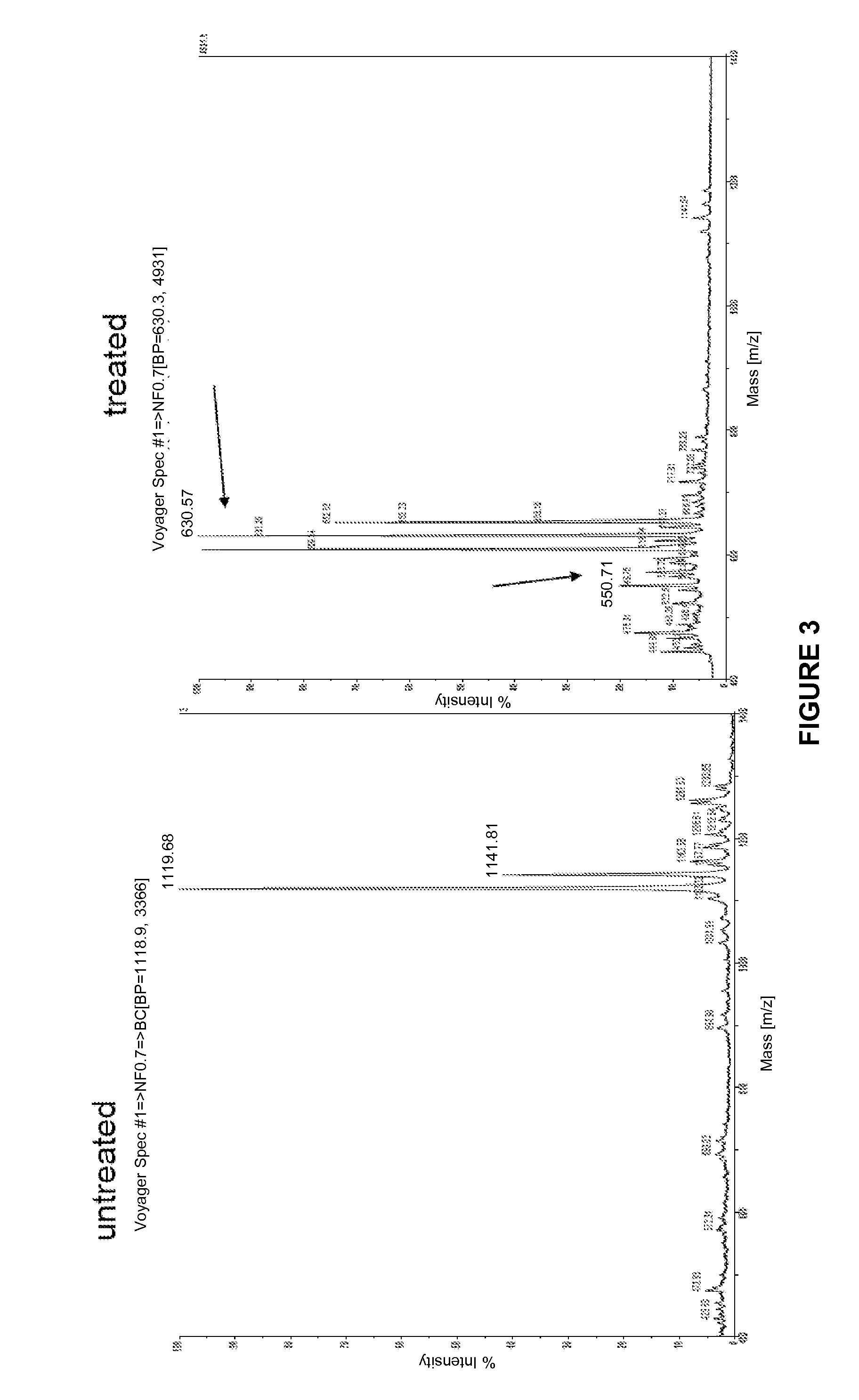Methods For Inhibiting Viruses By Targeting Cathepsin-L Cleavage Sites In The Viruses' Glycoproteins
a glycoprotein and virus technology, applied in the field of viral infection, can solve the problems of no effective treatment for the above fatal viruses, and dramatic side effects, and achieve the effect of inhibiting the viral infection
- Summary
- Abstract
- Description
- Claims
- Application Information
AI Technical Summary
Benefits of technology
Problems solved by technology
Method used
Image
Examples
example 1
[0288]293FT cells were grown in Dulbecco's Modified Eagles Medium (DMEM, Cell gro) supplemented with L-Glutamine (Invitrogen), Sodium Pyruvate (Invitrogen), Non-essential amino acids (Invitrogen), and 10% Fetal Bovine Serum (FBS). The cells were used for preparation of SARS-CoV, Ebola, Hendra, Nipah, and VSVG pseudotyped viruses and for the Ebola, Hendra, Nipah, VSVG pseudotyped viruses entry inhibition experiments discussed below. The 293FT transiently transfected with the human ACE2 expression plasmid were used for the SARS-CoV pseudotyped viruses entry inhibition experiments discussed below.
example 2
of Viral and Host Proteins Derived Peptides That Contain the Natural Cathepsin L Cleavage Sites
[0289]The cathepsin L (CatL) cleavage sites in the glycoproteins of SARS-CoV, EBOV, NiV and HeV zoonotic viruses were identified as conserved elements. Peptides (10 amino acids long), derived from the glycoproteins of SARS-CoV, EBOV, HeV, NiV, the host pro-neuropeptide Y (pro-NPY) and the host peptide F (Pep F) that contain the naturally conserved CatL cleavage sites, were synthesized in the protein research laboratory at UIC (FIG. 1). The peptides contained the natural cathepsin L cleavage sites in the viral proteins and host pro-NPY. The viral and host pro-NPY derived peptides were labeled on the N-terminus with 5-Carboxytetramethylrhodamine (Tamra) as a quencher and on the C terminus by 5-Carboxyfluorescein (5-FAM) as an emitter in the protein research laboratory at UIC. The labeled peptides were purified using reversed phase High performance Liquid Chromatography (HPLC) in the UIC prot...
example 3
ion of the High Throughput Screening Assay (HTSA)
[0292]The HTSA is a Fluorescence Resonance Energy Transfer (FRET) based assay. The labeled SARS-CoV S protein derived peptide was used as a substrate in the primary screen. The assay was optimized in black 384 well plates (Thermoscientific) using 3 μM SARS-CoV-S derived labeled peptide incubated with 1 μg / ml human cathepsin L (Sigma Aldrich) and further optimized with 1 μM SARS-CoV-S derived labeled peptide incubated at room temperature with 0.25, 0.5, and 1 μg / ml catL in 50 μl total volume of NH4Ac buffer pH 5.5 supplemented with 4 mM EDTA and 8 mM DTT. The fluorescence was measured over time, at 535 nm after excitation at 485 nm, using fluorescence reader at the UIC HTS facility. The EBOV GP, HeV and NiV F0 derived labeled peptides as well as the host pro-NPY and Pep F derived peptide were tested for cleavage concentration by incubation 1 μM of each peptide with different concentrations of cathepsin L (0.25, 0.5, and 1 μg / ml). The r...
PUM
| Property | Measurement | Unit |
|---|---|---|
| concentrations | aaaaa | aaaaa |
| concentrations | aaaaa | aaaaa |
| concentrations | aaaaa | aaaaa |
Abstract
Description
Claims
Application Information
 Login to View More
Login to View More - R&D
- Intellectual Property
- Life Sciences
- Materials
- Tech Scout
- Unparalleled Data Quality
- Higher Quality Content
- 60% Fewer Hallucinations
Browse by: Latest US Patents, China's latest patents, Technical Efficacy Thesaurus, Application Domain, Technology Topic, Popular Technical Reports.
© 2025 PatSnap. All rights reserved.Legal|Privacy policy|Modern Slavery Act Transparency Statement|Sitemap|About US| Contact US: help@patsnap.com



